#Polydesmida
Text
one of the most impressive animals I met this year was a huge platyrhacid millipede, found chugging through some bamboo leaf litter in Malaysia.
he was a pleasant weight to hold in the hand, but spread out over so many gentle, graceful legs. the video offers a nice look at his eyeless face—all polydesmidan millipedes lack eyes.

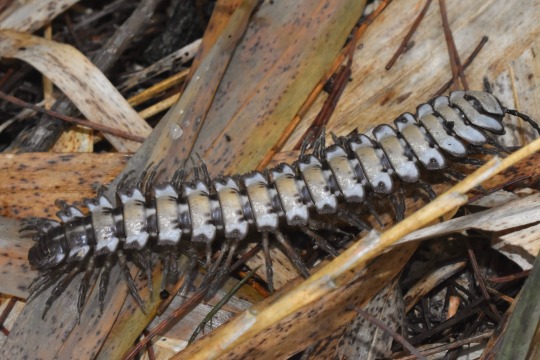
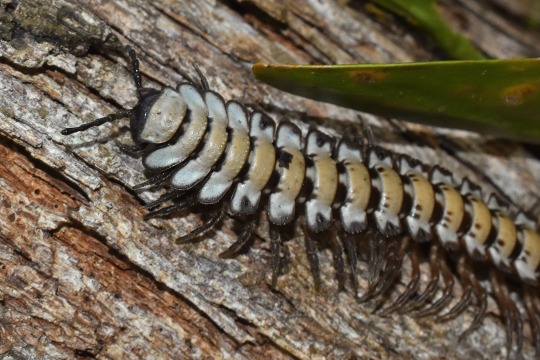

I only hung onto this animated spinal cord for about thirty seconds before setting him back in the leaves, but I recall this encounter so vividly. a truly memorable creature
15K notes
·
View notes
Text
This is a flat-back millipede, these guys produce hydrogen cyanide and can be freaky to look at but they’re just little guys
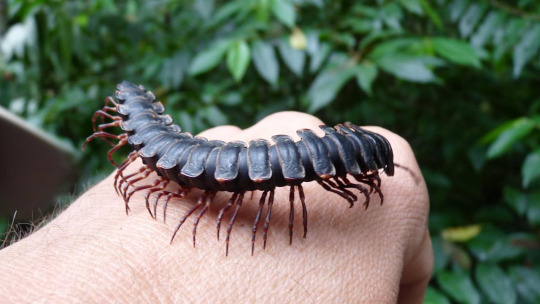
(Source: MarkEisingBirding)
73 notes
·
View notes
Text

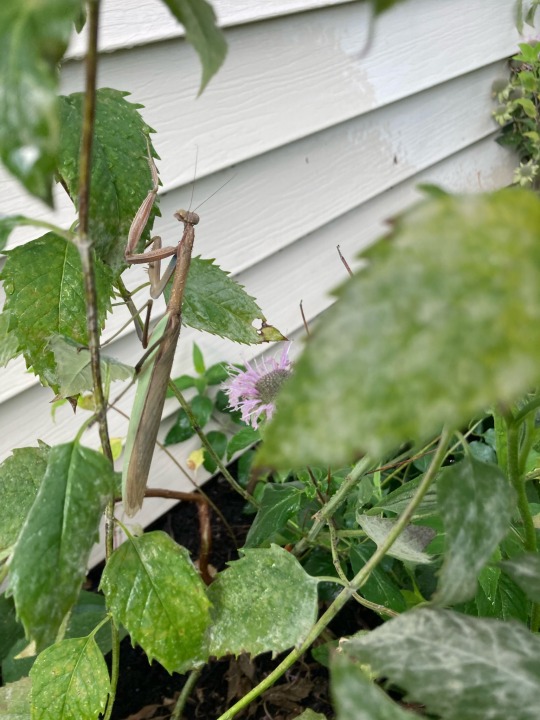
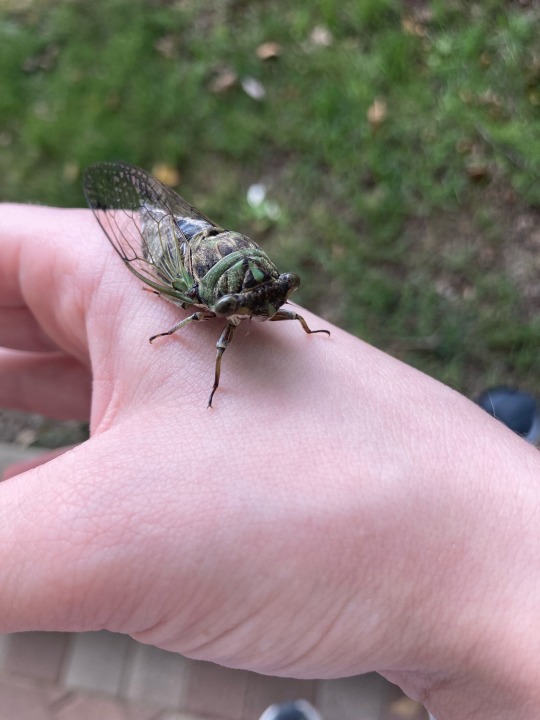






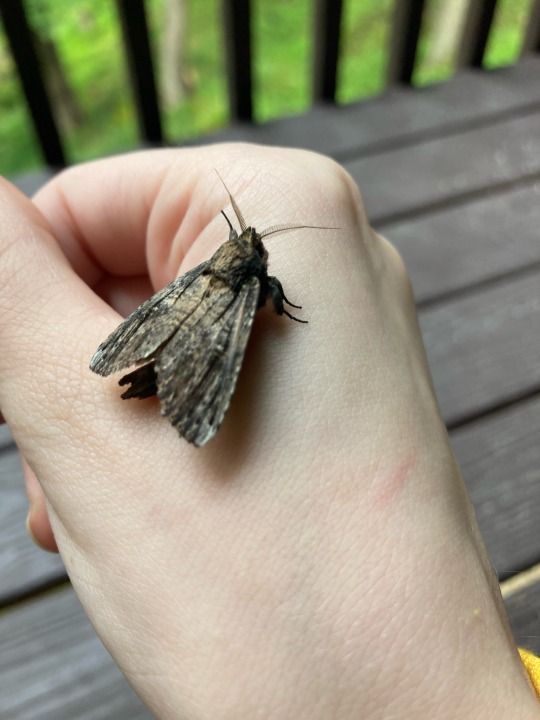
@rogueinkglitch submitted: A plethora of friends from Ohio! A lovely mantis who has made its home in the flower garden and is getting bigger by the day, one of the many cicadas who I have been rescuing from the pavement on my college campus, a caterpillar, an absolute stunning centipede, two of the many millipede found in a crevice in a rock face while hiking, a beetle of some kind, another beetle, and a very pretty moth who did a little wiggle dance then went to sleep on my arm for a while before I coaxed her back onto a leaf so I could go inside. Exact ids on any of these babies would be appreciated, all are from Ohio!
Side note you are one of my favorite blogs, most of my friends are not insect fans so I love sharing my finds here where I know a lot of people will enjoy them!
Thank you! I am very glad to receive and coo over any and all bug photos, so you've come to the right place.
In order: Chinese mantis, dog-day cicada, white-marked tussock moth caterpillar, NOT a centipede but rather a black and gold flat millipede, American giant millipede, would need a clearer photo but looks weevil-y?, not a beetle but a leaf-footed bug, and finally idk offhand. Brown mystery moth.
Thanks for sharing all your lovely friends!
#animals#bugs#insects#submission#myriapods#praying mantis#mantid#chinese mantis#cicada#dog day cicada#white marked tussock moth#caterpillar#larva#tussock moth caterpillar#millipede#flat backed millipede#polydesmida#black and gold flat millipede#american giant millipede#beetle#weevil#true bugs#leaf footed bug#moth#long post
185 notes
·
View notes
Text

Xystocheir dissecta, a species of flat-backed millipede found only in California. They’re fairly common in forest litter around the Bay Area and show up very well with a black light at night. Like many flat-backed millipedes, they produce hydrogen cyanide as a chemical defense against predators.
Here’s the same individual in white light:

#Xystocheir dissecta#flat backed millipede#millipedes#polydesmida#Bay Area wildlife#bugs#nature#nature photography#biodiversity#animals#inaturalist#arthropods#creepy crawlies#fluorescent#gummy worms#biology nerd#zoology#interesting#educational#bugblr#uv light#invertebrates#cyanide#creature#critters#bay area#california
61 notes
·
View notes
Text


Pale Flat-backed Millipede
Unidentified, order Polydesmida
24/03/23 - NSW, Dapto
#Polydesmida#unidentified#Flat-backed Millipedes#Helminthomorpha#Worm-like Millipedes#Diplopoda#Millipedes#Myriapoda#Myriapods#invertebrates#invertblr#Arthropods#Arthropoda#bugs tw#insects#insect#insecta#insectblr#insects tw#bugs#bugblr#bug#entomology
27 notes
·
View notes
Text
tippy tappy
#bugblr#dragon millipedes#polydesmida#desmoxytes planata#pink dragon millipede#millipedes#such dainty toes
47 notes
·
View notes
Text
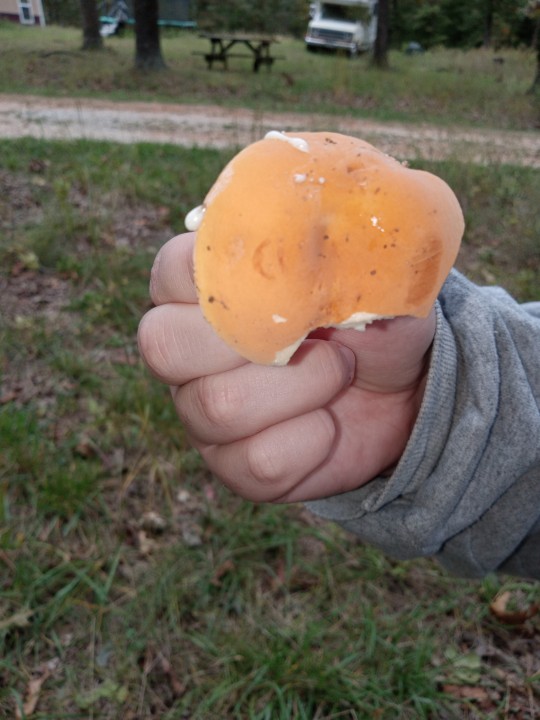



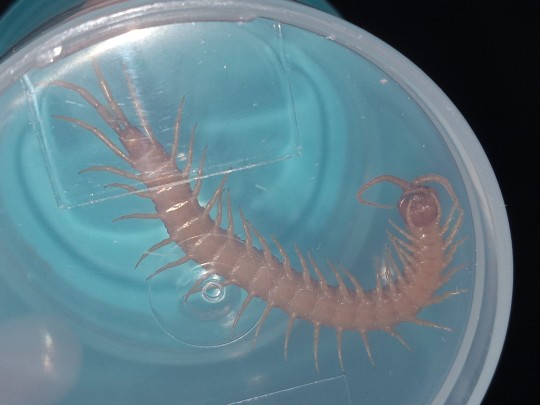



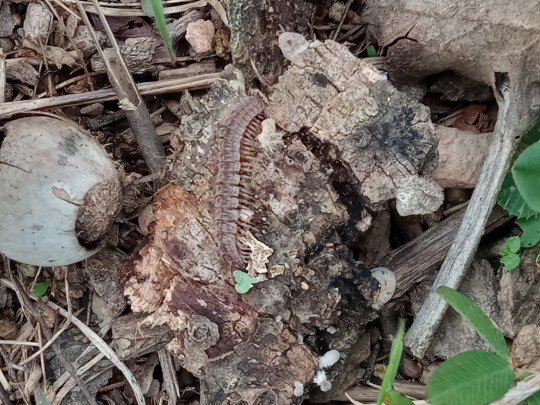
Woods day 👍
#sealpics#fungi#mycology#Lactarius volemus#weeping milk cap#bugs#myriapods#centipedes#millipedes#flatback millipede#polydesmida#eastern red centipede#Scolopocryptops sexspinosus
4 notes
·
View notes
Text

Dragon Millipede (Desmoxytes planata), family Paradoxosomatidae, probably native to the Andaman Islands, but introduced widely to tropical regions around the world
photograph via:
Ruttapon Srisonchai, Henrik Enghoff, Natdanai Likhitrakarn, Somsak Panha - Srisonchai R, Enghoff H, Likhitrakarn N, Panha S (2018) A revision of dragon millipedes I: genus Desmoxytes Chamberlin, 1923, with the description of eight new species (Diplopoda, Polydesmida, Paradoxosomatidae).
ZooKeys 761: 1-177. https://doi.org/10.3897/zookeys.761.24214
162 notes
·
View notes
Photo
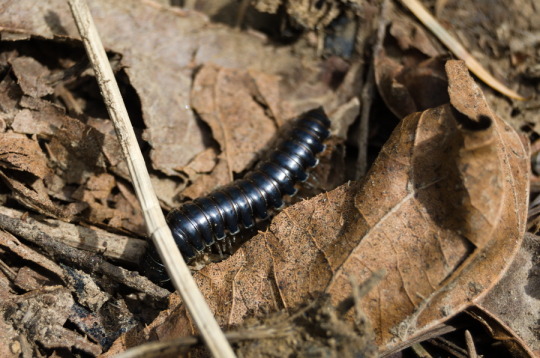


im actually not sure what this guy is. im assuming something in the order Order Polydesmida. so so cute though! photos by me
102 notes
·
View notes
Text
the polydesmidan millipede family Paradoxosomatidae is highly diverse in Southeast Asia, and here’s a bunch I saw last year. these first two are from Sarawak, Malaysia, and I have no idea what they are.

many paradoxosomatids are arboreal and some even diurnal, despite belonging to an order that lacks eyes entirely. they can march around with little fear though because like many millipedes, they’re full of foul-tasting toxins that most predators can’t tolerate. they advertise this with bright colors and rippling leg displays, as seen in the video.
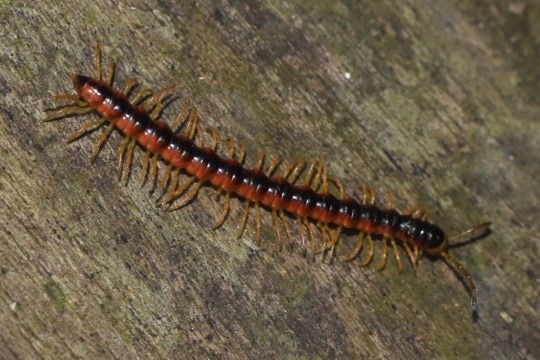
the rest are from Singapore; this one is also unidentified.

an Orthomorpha murphyi pair with a little pyrgodesmid passing by.

Opisthodolichopus scandens is nicely marked with pink.

Anoplodesmus sassurei is a very common species in Singapore, and seems to emerge in large numbers on sidewalks after a good rain.
1K notes
·
View notes
Text

@flawlesschowchow submitted: Hey, I found this millipede in the potting soil of one of my tropical plants and I was wondering if I could get an id on it. I live in [removed] (please remove location), but considering that this plant is not native to my region, this location might not help with IDing. It was found in the Rattlesnake plant (Goeppertia insignis) pot, if that information helps.
Also, any advice on what to do with it would be helpful. I don't want to release a potentially non-native species into my area, but I also don't want the poor thing to just live in there without any food. Any help is appreciated, thanks!
It's a flat-backed/polydesmid millipede. It looks to me like a greenhouse millipede, which is not native but was introduced a long time ago and is now common so releasing one individual isn't gonna hurt anything. On the off chance it's not a greenhouse millipede, rattlesnake plants are common enough house plants that I'd bet it was grown locally unless you ordered it from out of state, but to be safe, you can leave the pede in the plant if you don't want to kill it or feel weird about releasing it. It will have all it needs to eat in there as they feed on decomposing organic matter and there's plenty of stuff in the dirt + old leaves from the plant itself that it could happily eat for the rest of its life. It may come out when you water the plant, but otherwise you wouldn't see it much.
#animals#insects#bugs#submission#myriapods#millipede#flat backed millipede#polydesmida#greenhouse millipede
72 notes
·
View notes
Photo

#millipede #millipedesofinstagram ofinstagram #isopodsandspringtails #millipedeofinsta #millipedeseverywhere #millipedelove #isopodsquad #isopods #crustaceans #crustacean #CUC #cucofinstagram #cleanupcrewofinstagram #bugslife #bugsofinstagram #bugs #polydesmida #porcellio #armadillidium #porcellionides #pillbugs #rolliepollie #potatobugs #normszoo #normslifephotos #normb69 #BlaziNBUGS #BlaziNBUGZ #normszoo6669 #normszoolife (at Pawtucket, Rhode Island) https://www.instagram.com/p/COmLw94s3--/?igshid=t15ycqf6g4p0
#millipede#millipedesofinstagram#isopodsandspringtails#millipedeofinsta#millipedeseverywhere#millipedelove#isopodsquad#isopods#crustaceans#crustacean#cuc#cucofinstagram#cleanupcrewofinstagram#bugslife#bugsofinstagram#bugs#polydesmida#porcellio#armadillidium#porcellionides#pillbugs#rolliepollie#potatobugs#normszoo#normslifephotos#normb69#blazinbugs#blazinbugz#normszoo6669#normszoolife
3 notes
·
View notes
Text

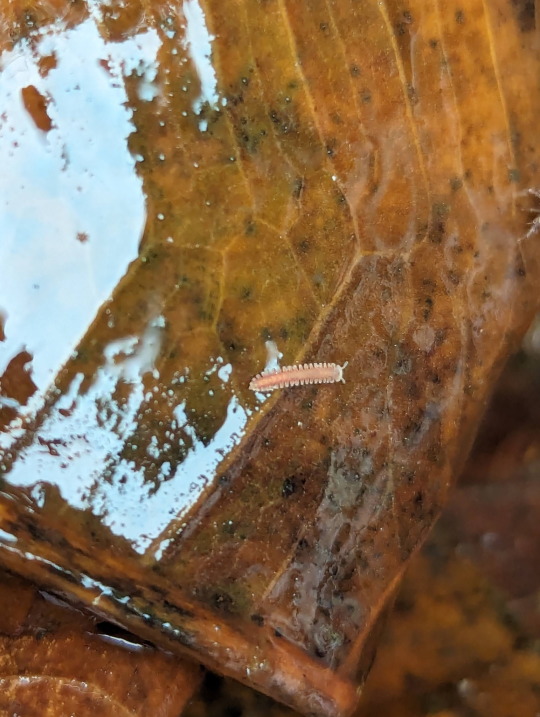
Strange pyrgodesmid millipedes.
13/01/24 - Pyrgodesmidae sp.
QLD:WET
#nature#invertebrates#invertblr#Arthropods#Arthropoda#unidentified#Pyrgodesmidae#Worm-like Millipedes#Polydesmida#Flat-backed Millipedes#Diplopoda#Millipedes#Myriapoda#Myriapods
14 notes
·
View notes
Photo
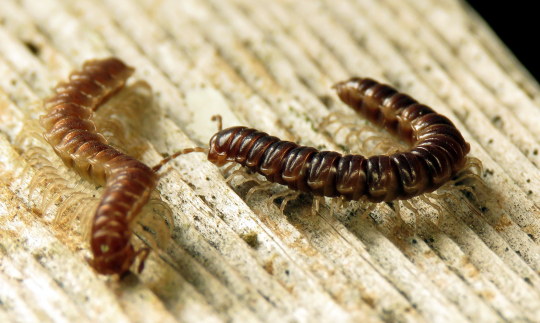
Bug of the Day
Well, this greenhouse millipedes (Oxidus gracilis) are definitely not practicing social distancing, but I suppose I cannot blame them since this photo was taken last June :-). They had *no idea* what was coming, and neither did we...
Hat tip to @speciesofleastconcern for the id!
#millipede#greenhouse millipede#Oxidus gracilis#Oxidus#arthropod#Paradoxosomatidae#Diplopoda#Polydesmida
82 notes
·
View notes
Photo

I had no awareness of flat-backed millipedes until a few years ago when this critter was spotted hanging out in my organic kitchen garden. I believe the species is Pleuroloma flavipes.
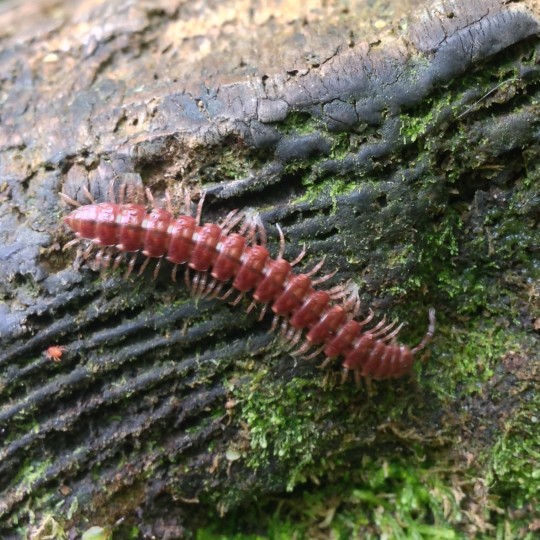
Then, on one of my trips to Oregon I got to see this pretty brick-red one making its living in a forest (who wouldn’t!) that’s been tentatively identified as Nearctodesmus insulanus.

Farther south I spotted this one getting its many feet muddy in the Monteverde Cloud Forest Reserve in Costa Rica. Using iNaturalist’s computer vision program I’m IDing this one for now as Nyssodesmus python. What a great name, right?
Flat-backed millipedes are in the Order Polydesmida. With around 3,500 species it is the largest order of millipedes (Class Diplopoda.) They produce hydrogen cyanide (not sure if they all do) and many have bright coloration to warn predators that they’re armed. They don’t have any eyes, so are unfortunately probably not aware of how pretty they are. The group’s name comes from the widened lateral keels called paranota that some, but not all species have.
For more on these animals check out the cool website I found while researching this post. It contains this paragraph which makes me think all my IDs should remain tentative until a real expert looks at them:
“Polydesmida are poor dispersers under natural conditions and seem to be very good at evolving new species. As a result, many polydesmidan species have small geographical ranges (100‒1000 square kilometres). Some Polydesmida are only known to occur at a single locality, such as a particular mountain. Polydesmidan genera are also good at forming distribution mosaics, in which each species occupies its own patch on the map and overlaps very little (or not at all) with other species in the same genus.”
5 notes
·
View notes